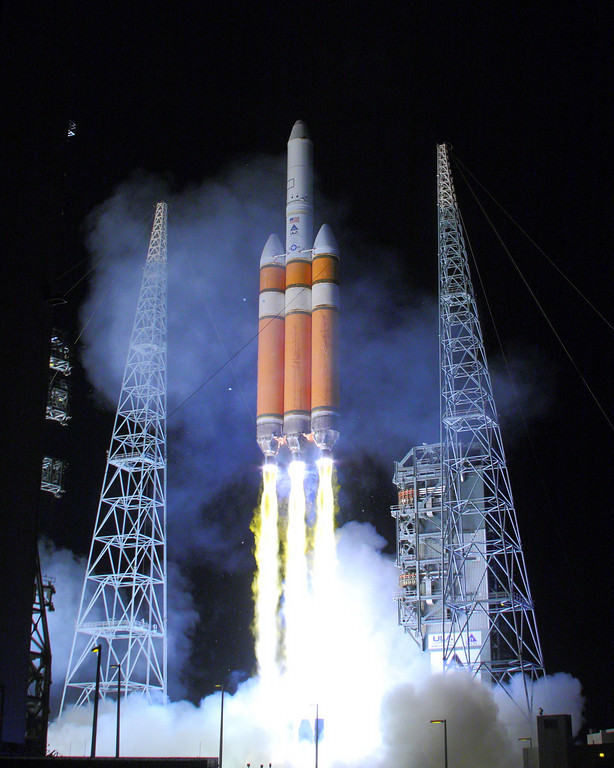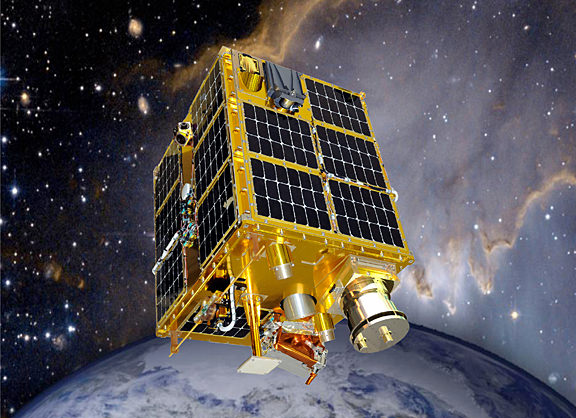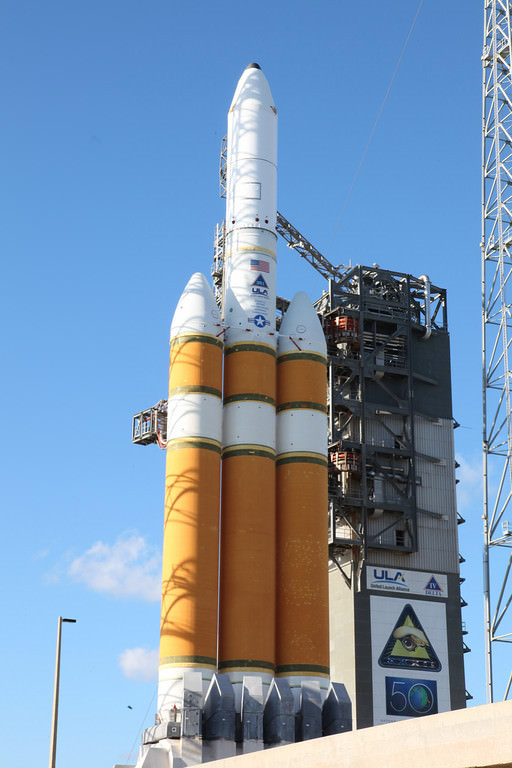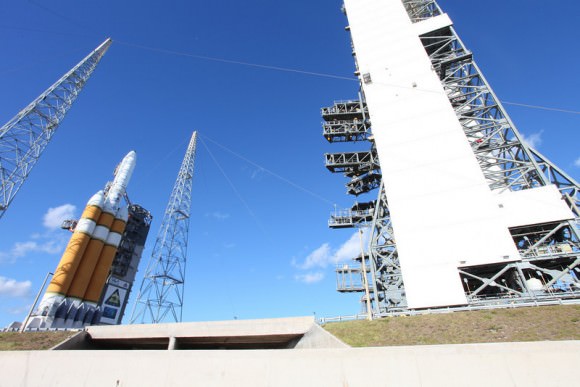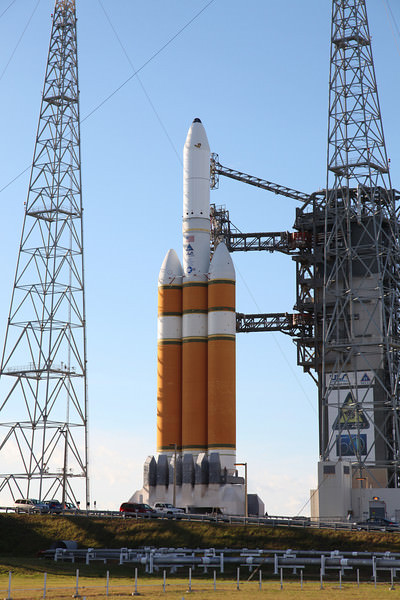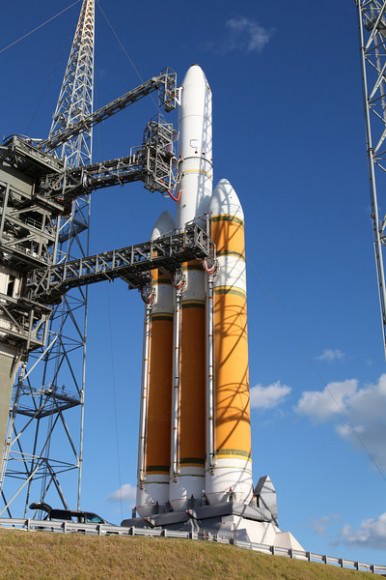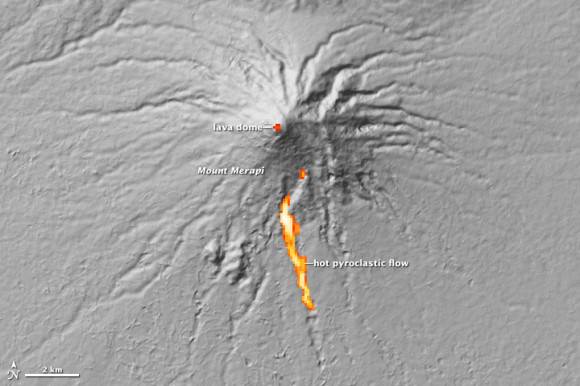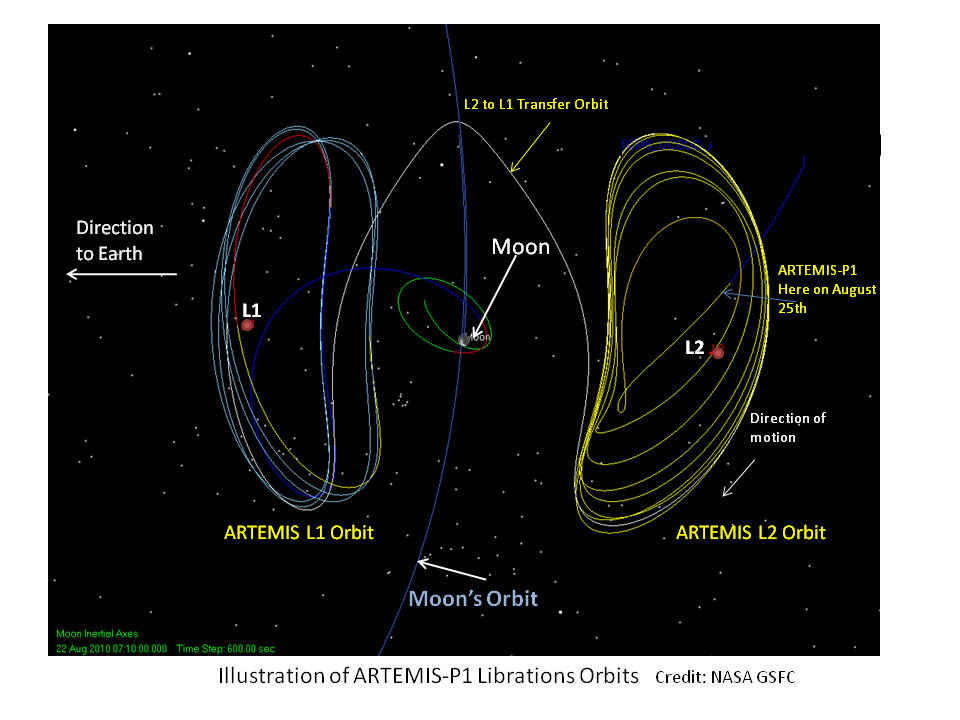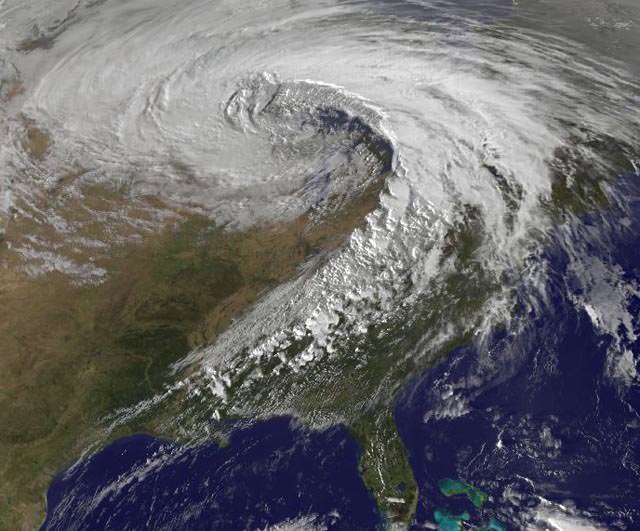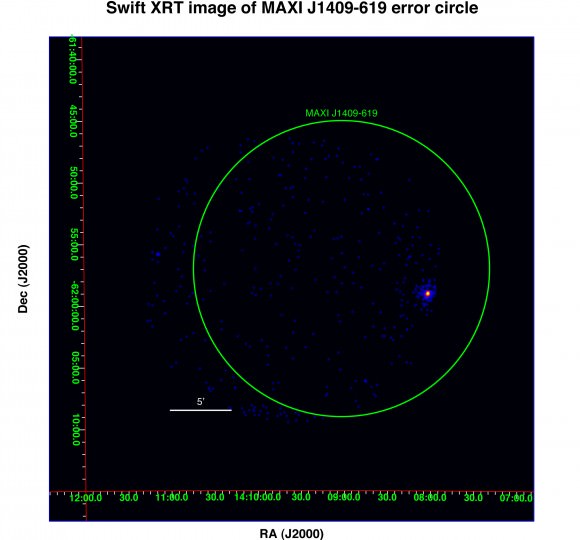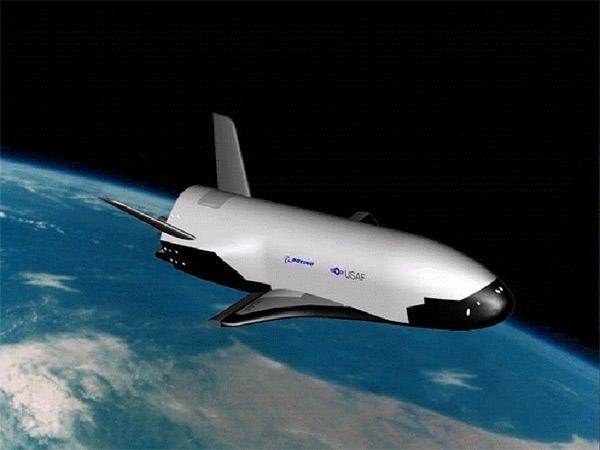[/caption]
CAPE CANAVERAL — United Launch Alliance (ULA) successfully launched a Delta IV Heavy rocket from Cape Canaveral Air Force Station in Florida, sending a classified surveillance satellite to space. Liftoff occurred on Nov. 21 at 5:58 p.m. EDT. The enormous rocket thundered to life, and as almost to underscore the secretive nature of the mission, the fiery exhaust was only visible for a short while before disappearing into thick clouds. However, long after the rocket was out of view, it made its journey known through its roar. The vibration was so visceral that vehicles and windows of buildings in the immediate area began to rattle with the raw power that was unleashed.
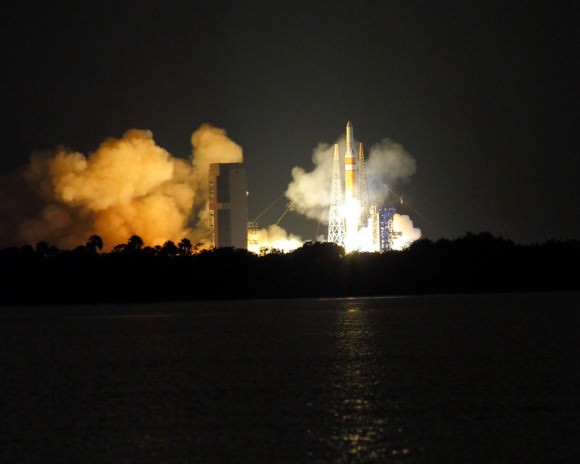
U.S. Air Force’ meteorologists predicted a 90 percent chance of acceptable weather for the launch, with only a tiny chance that winds could exceed the 20-knot limit. Winds were not an issue however and by all accounts the vehicle performed flawlessly.
The first launch attempt of the classified National Reconnaissance Office (NRO) satellite was scrubbed Friday during fueling of the Delta IV. Technicians determined that the reason for the scrub on Nov. 19 was a faulty sensor. The sensor gave incorrect temperature readings that were detected in the rocket’s three first-stage boosters. Technicians believed (correctly so) that they had resolved the issue.
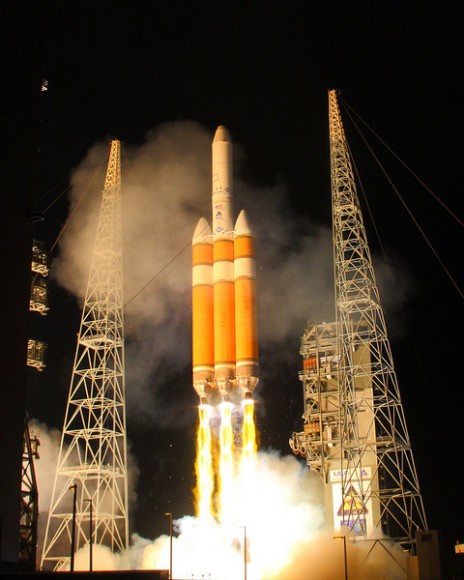
The launch team rolled back the 330-foot mobile service tower earlier in the day and pumped approximately 450,000 gallons of liquid hydrogen and liquid oxygen into the twin boosters.
Tonight’s launch marked the third operational flight of the massive Delta IV Heavy since its first demonstration flight back in December of 2004.
“This mission helps to ensure that vital NRO resources will continue to bolster our national defense,” said Brig. Gen. Ed Wilson, 45th Space Wing commander. “The spectacular evening launch showcases how the 45th assures access to the high frontier and supports global operations.”

